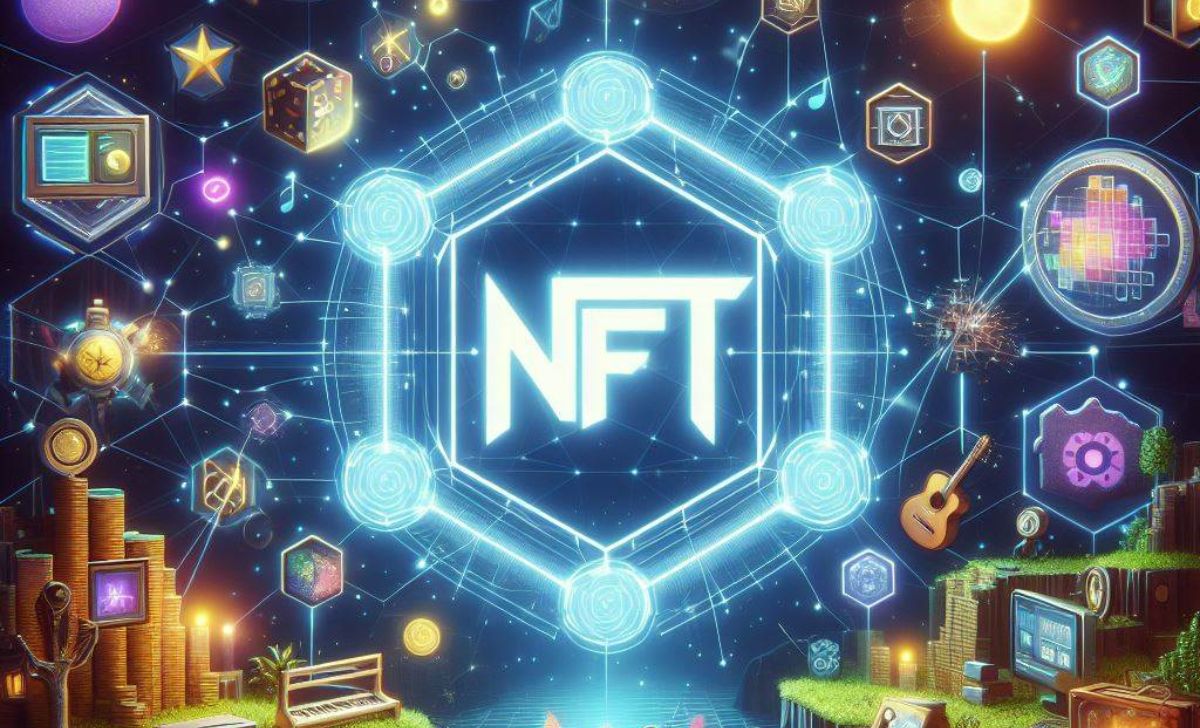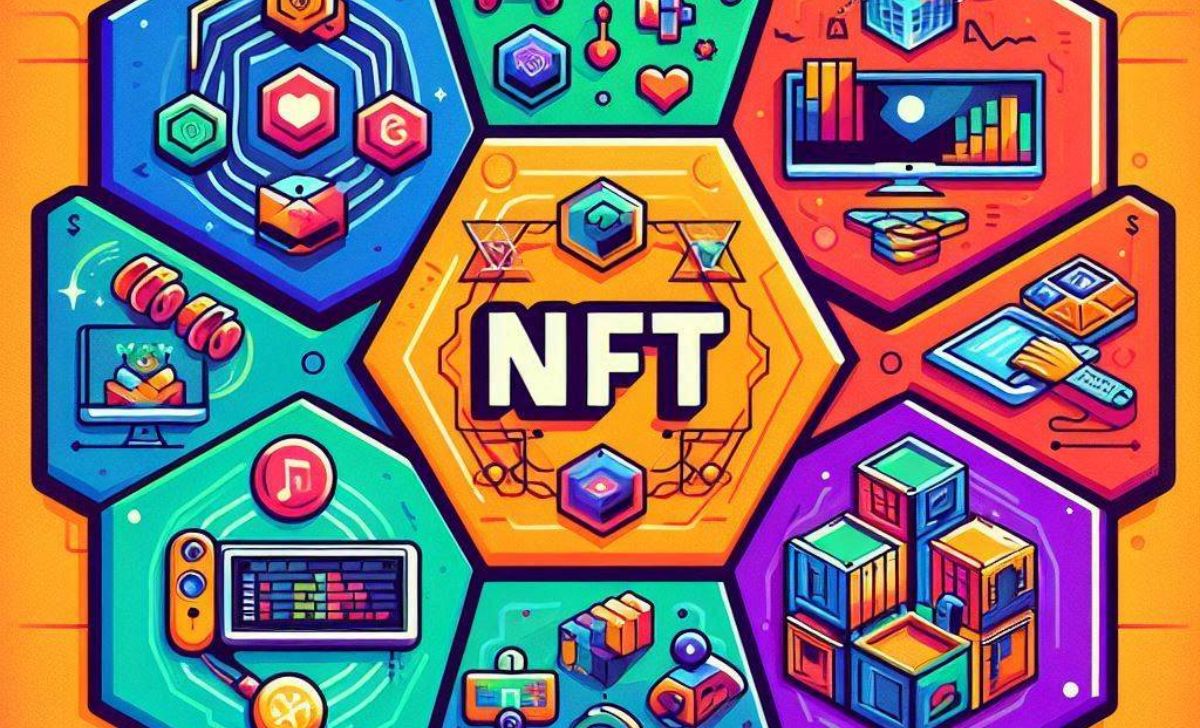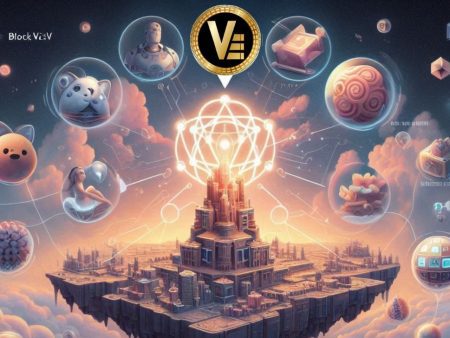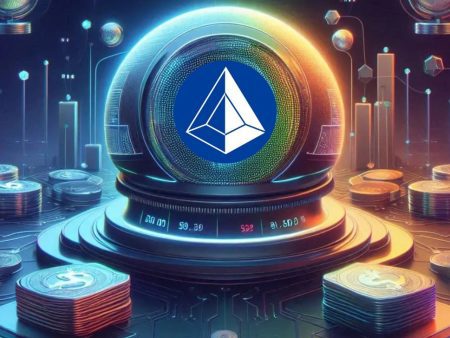What Are NFTs, with their ability to revolutionize digital ownership, are gaining increasing attention. You might be wondering about their definition and how beginners can get started. The following article from TopCoin9 will help you understand them better.
What Are NFTs?

NFTs, or Non-Fungible Tokens, are digital assets that hold unique value and cannot be replaced by another identical asset. Unlike cryptocurrencies such as Bitcoin or Ethereum, which are interchangeable, each NFT has distinct properties that set it apart. What are NFTs exactly? They are digital representations of ownership that are recorded on a blockchain, making them highly secure and verifiable.
NFTs are stored on blockchain networks, primarily Ethereum, ensuring transparent and verifiable ownership. By utilizing blockchain technology, NFTs provide proof of authenticity, making them ideal for digital art, collectibles, and virtual goods. Understanding NFT meaning explained is crucial for anyone interested in digital ownership.
Now that we’ve established what NFTs are, let’s dive into how they actually work. Understanding their mechanics is essential before you begin interacting with them.
How Do NFTs Work?

NFTs function through blockchain technology, with Ethereum being the most widely used network for their creation and storage. The underlying smart contracts ensure that each NFT is unique, verifiable, and transferable.
Key Elements of NFTs:
- Blockchain Technology: Stores NFT data securely and prevents duplication.
- Smart Contracts: Enable decentralized ownership verification and transactions.
- Metadata & Attributes: Define the properties and characteristics of each NFT.
Popular NFT blockchains include Ethereum, Solana, and Polygon, each offering different features and transaction fees. What are NFTs without blockchain? They simply wouldn’t exist, as blockchain technology guarantees their uniqueness and security.
With a clear understanding of how NFTs function, let’s explore the different types of NFTs available and their various use cases. This will help you grasp their versatility in the digital world.
Types of NFTs and Their Use Cases

NFTs are revolutionizing various industries by providing digital ownership and monetization opportunities. Here are some of the most common types of NFTs:
Digital Art & Collectibles
NFTs allow artists to tokenize their work, proving authenticity and preventing duplication. Platforms like OpenSea and Foundation have empowered digital artists to sell their creations directly to collectors. This NFT beginner’s guide helps newcomers understand how digital art NFTs function in the marketplace.
After exploring the world of digital art and collectibles, we now turn our attention to gaming and virtual assets, where digital ownership takes on new dimensions through immersive experiences and blockchain innovations.
Gaming & Virtual Assets
Many blockchain-based games offer NFTs as in-game items, characters, or land ownership. Games like Decentraland and Axie Infinity have demonstrated how NFTs can drive the virtual economy. What are NFTs in gaming? They are unique assets that players can buy, sell, and trade across various virtual worlds.
Before buying, many users benefit from reviewing a comprehensive NFT trading guide to navigate pricing, rarity metrics, and auction strategies.
Music & Media
Musicians and content creators can mint NFTs to offer exclusive songs, albums, or digital merchandise, enabling direct fan engagement and royalties.
Next, we delve into real estate and identity, where digital innovation is redefining ownership and personal presence.
Real Estate & Identity
NFTs are beginning to tokenize real-world assets like property deeds and personal identities, ensuring security and fraud prevention in transactions. NFT meaning explained extends beyond collectibles, showing their potential in the real estate and finance industries.
Now that you’re familiar with the different types of NFTs, it’s time to learn how to buy and sell them. Let’s break down the process step-by-step to help you get started.
How to Buy and Sell NFTs?

For those new to the NFT space, purchasing and selling NFTs involves a few essential steps. This NFT beginner’s guide will help you navigate the process.
- Set Up a Crypto Wallet: To store and trade NFTs, users need an Ethereum-compatible wallet such as MetaMask or Trust Wallet.
- Purchase Cryptocurrency: Most NFT marketplaces operate on Ethereum, requiring users to buy ETH for transactions and gas fees.
- Choose an NFT Marketplace: Platforms like OpenSea, Rarible, and SuperRare are among the top NFT platforms, providing a wide range of NFTs from art to gaming assets.
- Buy or Mint NFTs: Users can either purchase existing NFTs or create their own by minting new ones through smart contracts.
- Sell or Trade NFTs: NFT holders can list their assets for sale or trade them on secondary marketplaces, often at higher values. What are NFTs in the marketplace? They are digital goods with verifiable ownership that can be resold, traded, or collected.
Buying and selling NFTs is exciting, but it’s important to be aware of the risks and challenges involved. Let’s explore the potential obstacles and things to consider when dealing with NFTs.
Risks and Challenges of NFTs
While NFTs offer exciting opportunities for digital ownership and monetization, they also come with significant risks and challenges:
- Market Volatility – NFT prices can fluctuate dramatically, leading to financial uncertainty for investors and creators.
- Scams and Fraud – The NFT space is rife with scams, counterfeit assets, and rug pulls, making due diligence crucial.
- Intellectual Property Issues – Unauthorized minting of digital assets can lead to copyright disputes and legal complications.
- Environmental Concerns – Some blockchain networks supporting NFTs consume vast amounts of energy, raising sustainability concerns.
- Regulatory Uncertainty – Governments and financial institutions are still defining NFT regulations, which could impact their long-term viability.
If you’re planning to start NFT investing, understanding these risks and conducting proper research can help you make informed decisions.
While there are risks, securing your NFTs is crucial to ensuring their safety. Let’s discuss the best practices for keeping your NFTs safe from theft or loss.
How to Secure NFTs?
For those seeking an NFT beginner’s guide on security, protecting digital assets is essential to avoiding scams and theft.
How to Secure Ethereum-Based NFTs
- Use Cold Wallets: Store valuable NFTs in hardware wallets like Ledger or Trezor to prevent hacking.
- Beware of Phishing Scams: Avoid clicking on suspicious links or connecting wallets to untrusted platforms.
- Verify Smart Contracts: Always double-check contract addresses before making transactions.
With security measures in place, let’s discuss the future potential of NFTs and how they may evolve beyond collectibles.
Future of NFTs
The NFT space is constantly evolving, with exciting developments on the horizon.
- Metaverse Integration: NFTs will play a crucial role in virtual worlds, allowing ownership of digital land and assets.
- Expansion into Web3: NFTs will enhance decentralized applications, giving users more control over digital identity and ownership.
- Mainstream Adoption: As more industries embrace NFTs, their use cases will expand beyond digital art and gaming.
What Are NFTs? They are transforming digital ownership, creating new opportunities in art, gaming, and media. However, challenges like market volatility and regulatory uncertainty persist. Stay informed and deepen your knowledge by exploring more at TopCoin9.

As a certified blockchain security expert with over 8 years in cybersecurity, James Anderson specializes in auditing smart contracts and identifying vulnerabilities in DeFi protocols. His expertise ensures that TopCoin9 delivers reliable insights on blockchain security and risk management.
Email: [email protected]












